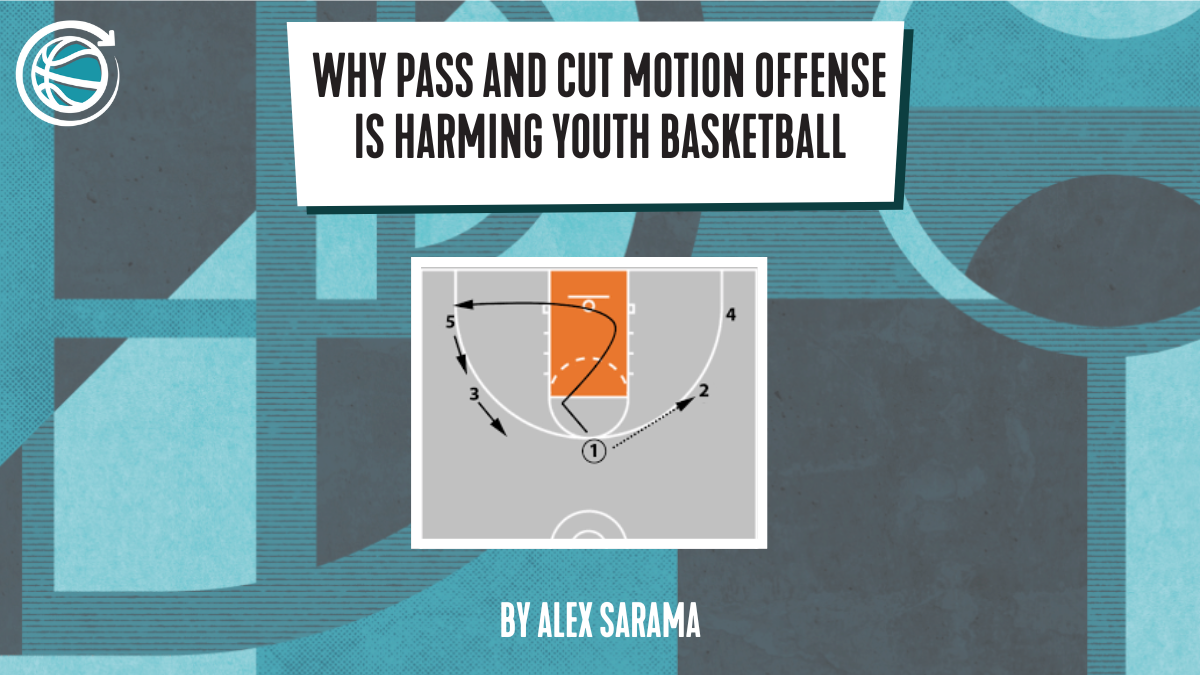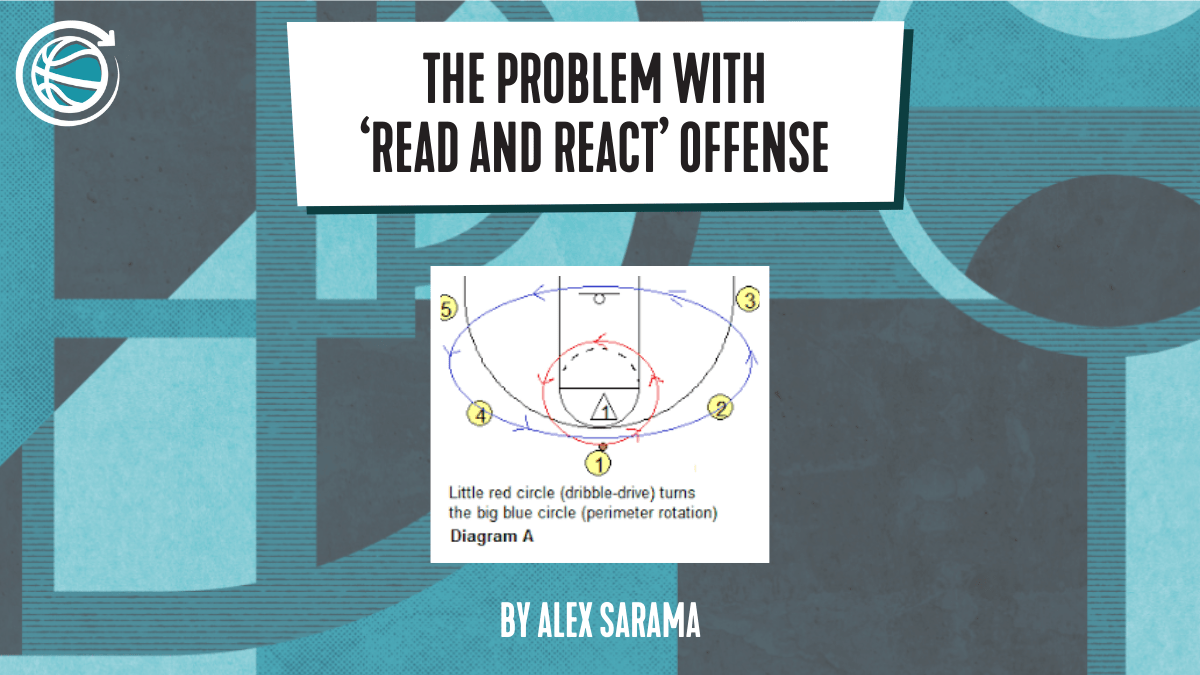How the CLA Transcends Basketball: A 360 Degree Perspective
The covid Pandemic was a difficult time for all of us, however, for many it provided an opportunity of a luxury that we don’t get a lot of: time. It was this that afforded me the chance to take a deep dive into Alex Sarama’s conceptual offense course. Little did I know this would send me down a path of re-evaluating everything I did from a coaching perspective. I was fortunate to have Alex come out and work with our program when he toured the US in the summer of 2022. After spending a few days with Alex, I was certain that this was the future of coaching.
In this post I’d like to highlight how I have used an ecological dynamics framework and the CLA across many parts of my life. I have quickly discovered that once you begin implementing the CLA in one area, you start thinking about its application in other aspects of life. Currently I am a Physical Education teacher, a head boys high school basketball coach, a strength and conditioning coach, a content creator for a social emotional program for athletes, and a father of two young boys that are active in many different sports and activities. In this blog, I will be sharing how I am using the CLA across all these different roles.
Basketball
I have been coaching basketball now for over 20 seasons and I am currently the Head Boys Varsity Coach at Joliet Catholic Academy. My initial implementation of the CLA into my practices looked more like a games-based approach instead of the CLA. I still found myself searching for “new SSG’s” to implement into my practices. My ability to manipulate constraints was still in its infancy and to be honest, much of the ‘language’ surrounding the CLA was intimidating to say the least. Luckily, Alex was a great resource for me as I continued to take a deeper dive into implementing this approach into my coaching. I also had the luxury of working with Francesco Nanni who is another brilliant mind that is using the CLA in his coaching. Since then I have become better at implementing task constraints that help my players self-organize to create new movement solutions.
This season I have had a former player of mine join our staff as an assistant coach. It’s been a fun challenge for me to teach him the CLA and the ‘why’ behind it. The progress has been great and just the other day he said to me, “Where was this when I was playing?!” Embedding player development work into practices has been important. I truly believe that player development and being a head coach shouldn’t be viewed as two separate roles but both under the same umbrella.
As a Dad
As a father of two boys (a 6 year old and 3 year old), I am beyond excited now that my children are beginning to dive into activities and athletics. Just like any other parent, I want to do everything I can to help my children enjoy a variety of sports/activities.
After I read Alex’s blog post “Do fundamentals really exist?” It really made me think about how I was going to introduce sports activities to my own children. For the last two years I have used the CLA to help my own children in movement/sports specific skills. The journey has been fun and my children have grown so much during this time.
I have coached my son’s teams in soccer and basketball focusing on using the CLA. I am currently running a youth (ages 5-7) basketball camp working with athletes with a wide range of abilities and experience. The videos below show some of the activities I have been using to promote skill adaptation with our athletes. The CLA can be used with younger athletes as you can see here! As someone that grew up predominantly learning to play sports and learn skills using strictly information processing, I am excited to use this new approach with my own children.
PE Teacher
My job is a physical education/health teacher in an intermediate school in the suburbs of Chicago. As I began to implement the CLA into my coaching, it was natural for me to begin using this methodology into my classes. The CLA helped solidify my viewpoint movement is based upon a nonlinear pedagogy. Gone are the days where I would teach a specific ‘technique’ to my students. Now my PE classes are filled with small-sided games compiled of all sorts of movement opportunities.
An example of one of these games is called “switch.” Switch is usually played 3v3 or 4v4. Minimal equipment is needed (one foam ball like a dodgeball, one large cone, one bowling pin (or other object to place on top of the cone), and 4 hula hoops. It is a fast paced game that requires teamwork and cooperation while incorporating throwing and catching skills. The offensive team must complete three passes before they attempt to score a point by throwing the ball to try and knock off the pin from the top of the cone. If a player is in possession of the ball they can’t take any steps. The four hula hoops are placed at the base of the cone and no player from offense or defense may step in that area. If the defensive team intercepts the ball or if the ball hits the ground it is a turnover. Everyone yells switch and the offense and defense switch roles.
By manipulating a variety of task constraints (increasing/decreasing boundary size, everyone must touch the ball on offense before a shot, offensive team can only use non dominant hand, one person is a “superhero” so if he/she scores the points are doubled, etc…) I can help my students achieve specific outcomes while keeping the game fresh. Watching movement solutions emerge in my students through exploration and interacting with the environment is so fun to watch!
Individual constraints are not something teachers/coaches have a massive amount of control over, however, it is essential that we are aware of them. Most of my students are 11 and 12 years olds, which means that the size, fitness levels, skill level, and emotional state of the children varies. Many of the games we play in PE class are played indoors and outdoors so students are forced to adjust to the environmental constraints as well such as wind, surface (grass vs. wood floor), and temperature.
In our final trimester of school this year, my students will be creating their own games using a variety of equipment. I am excited to see the creativity of my students come to life! In the past, I was manipulating task constraints, but this was nowhere near as purposeful as I am doing now. As my knowledge of the CLA continues to grow, I am curious to see how the learning environment of my PE classes will keep getting better and better!
Strength Coach
As the owner/operator of Nightshade Training, I have had the opportunity to work with athletes from elementary age to college level over the course of the last decade. The training that I do both personally and with my athletes looks different than it did just a few years ago. My warmups are filled with creating environments where my athletes are solving movement problems. Watching the movement solutions and creativity of my athletes is always a blast. For example, completing as many different jumps over a box for 8 minutes trying to use a variety of techniques.
Task constraints are applied throughout my sessions. For example, an activity for many younger athletes involves jumping over a hurdle while landing on a crash mat attempting to catch a variety of size balls. The young kids love this! The hurdle height, approach jump, size of the ball, all can be changed to provide a variability in movement.
For my older athletes, I utilize a plyomat to measure ground contact time on reactive hurdle hops. The constraint is to keep the GCT under a specific number while increasing hurdle height. In our strength exercises varying tempo, adding pauses, and using different stances/grips are all great ways to provide repetition with repetition during the sessions. Adding in variability into my sessions keeps things fresh for the athletes and helps create a fun and engaging environment for my athletes to thrive in!
Mental Performance
Developing physical literacy for my athletes on and off the court is essential, but it is not the only piece of the puzzle. How our players/athletes handle the mental side of sport is also extremely important. To help my athletes with this I am content creator for a program called Train Your Brain. Train Your Brain provides a platform for social and emotional learning for athletes. Viewing mental performance through a lens of ecological psychology allows us to see that athletes are constantly interacting with their environments. Through that environment, affordances (opportunities for action) emerge. By having these conversations and discussions with our athletes surrounding mental performance, we help them become better-equipped to handle such situations when they arise.
This sport performance SEL curriculum contains 15 minute “mini” lessons covering a variety of topics including themes such as handling adversity and a next play mentality. Each lesson contains short videos and questions that promote discussion among a coach and their team. Feel free to check out one of our lessons using this link!
Conclusion
I believe that the best coaches have knowledge across many different areas. Having one specific coach/specialist in all these areas (skill trainer, strength coach, mental performance) is not realistic at the high school level. The idea of treating these areas as “silos” is a mistake that too many coaches make. It has been a fun journey to start implementing the CLA across the many roles I have. The journey is just beginning and I am looking forward to seeing what it takes me as a coach!
Listen to this excellent podcast episode with Adam when he came on the Transforming Basketball Podcast!

Mar 13, 2024
Alex Sarama



